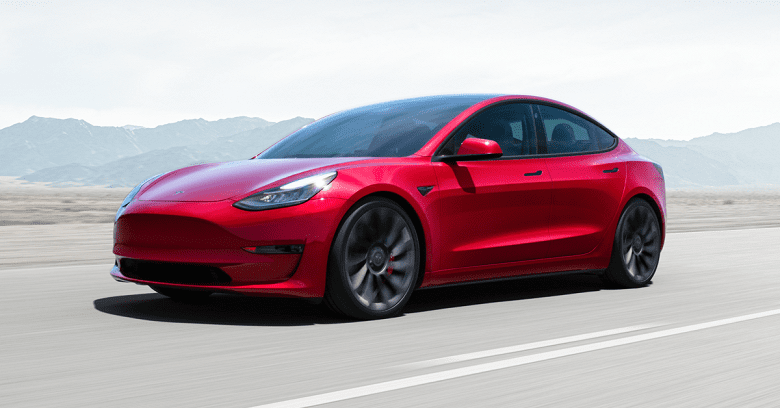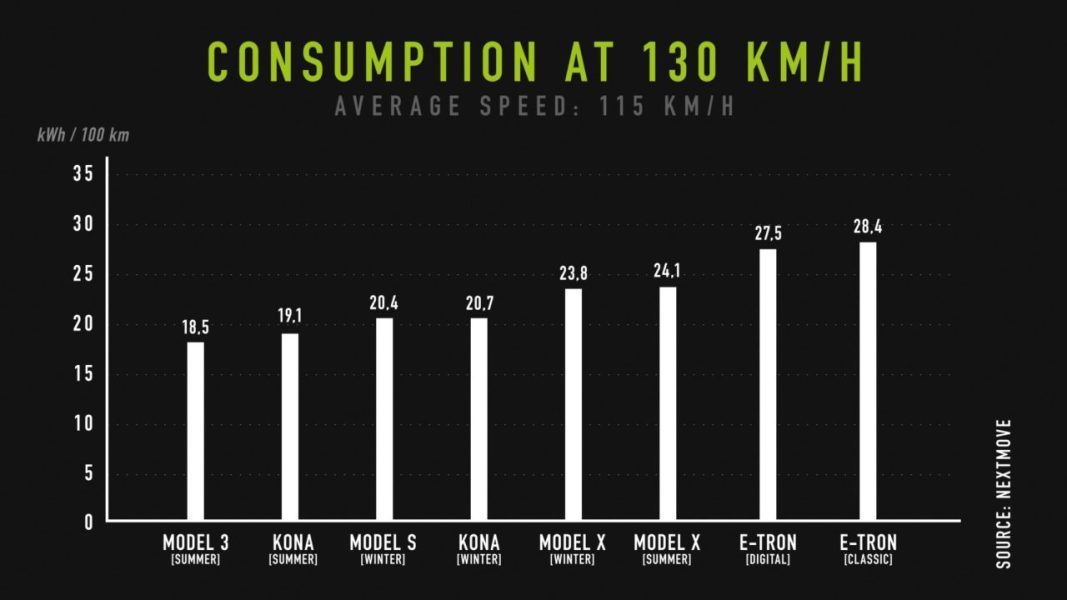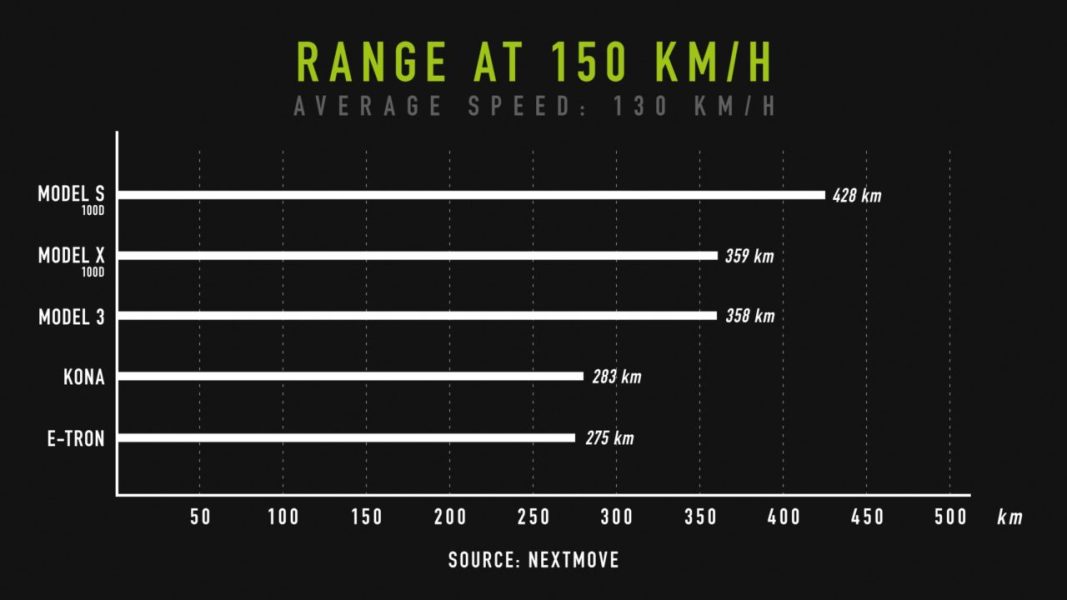
The most economical electric car for a family? Tesla Model 3. With the greatest reach? Tesla Model S
Content
German electric car rental company Nextmove tested several electricians on the track. Among the vehicles tested, the Tesla Model 3 had the lowest power consumption, the Tesla Model S 100D guaranteed the longest range, and the Audi e-tron the worst of the bunch.
The following cars took part in testing:
- 1x Tesla Model 3 Long Range 74/75 kWh (segment D),
- 2x Hyundai Kona Electric 64 kWh (segment B SUV),
- 1x Tesla Model S 100D ~ 100 kWh (segment E),
- 2x Tesla Model X 100D ~ 100 kWh (E-SUV segment),
- 2x Audi e-tron 83,6 kWh (E-SUV segment).
Since the experiment was conducted a few weeks ago, we will summarize only the most important findings.
The electric car accelerates to 130 km / h
It turned out that when driving slowly on the highway at a speed of 130 km / h (average 115 km / h), the Tesla Model 3 had the lowest power consumption:
- Tesla Model 3 (summer rubber) – 18,5 kWh / 100 km,
- Hyundai Kona Electric (summer rubber) – 19,1 kWh / 100 km,
- Tesla Model S (winter tires) – 20,4 kWh / 100 km,
- Hyundai Kona Electric (winter rubber) – 20,7 kWh / 100 km,
- Tesla Model X (winter tires) – 23,8 kWh / 100 km,
- Tesla Model X (summer rubber) – 24,1 kWh / 100 km,
- Audi e-tron (cameras instead of mirrors) - 27,5 kWh,
- Audi e-tron (classic) - 28,4 kWh.

At these speeds, the cars offered the following ranges:
- Tesla Model S 100D – 480 km,
- Tesla Model X 100D – 409 km,
- Tesla Model 3 – 406 km,
- Hyundai Kona Electric – 322 km,
- Audi e-tron – 301 km.

It is worth adding that these are probably averages or predicted by cars, because calculations taking into account the battery capacity give slightly different numbers.
> Volkswagen: Our batteries are protected for the "first few years"
The electric car accelerates to 150 km / h
At a speed of 150 km / h (average: 130 km / h), the order did not change much, only the energy consumption increased:
- Tesla Model 3 (summer rubber) – 20,9 kWh / 100 km,
- Hyundai Kona Electric (summer tire) – 21,7 kWh
- Tesla Model S (winter tires) – 22,9 kWh / 100 km,
- Hyundai Kona Electric (winter rubber) – 23,6 kWh / 100 km,
- Tesla Model X (winter tires) – 27,2 kWh / 100 km,
- Tesla Model X (summer rubber) – 27,4 kWh / 100 km,
- Audi e-tron (cameras instead of mirrors) - 30,3 kWh / 100 km,
- Audi e-tron (standard) 30,8 kWh / 100 km.

Audi loses, the result is strange
The cars will run on battery power from 428 kilometers (best: Tesla Model S) to 275 kilometers (worst: Audi e-tron). Audi's measurement here is quite interesting: the remaining cars lost 12-14 percent of their range when the speed increased from 130 to 150 km / h. Audi's loss was only 9,5 percent. Why?

It seems to us that there are two possible explanations for this situation. Well, at the wheel of Audi was the owner of the company and the initiator of the tests, a man who has honed his economical driving skills for years. He could intuitively drive a car more economically than the rest of the group.
> Mercedes EQS - Electric Mercedes S-Class [Auto Bild]
The second explanation already concerns technology: one of the Audi had cameras instead of mirrors. The range values have been averaged, so the absence of mirrors can reduce energy consumption and thus increase the range on a single charge.
This explanation is not self-defeating, as Nextmove measures consumption for versions with cameras ("digital") and mirrors ("classic"). However, a quick analysis of the figures presented in the tables suggests that ... a mistake was made. In our opinion, the actual Audi e-tron ranges shown in the tables apply in at least one case. Only version with cameras instead of mirrors.
Still worth seeing:
This may interest you:
